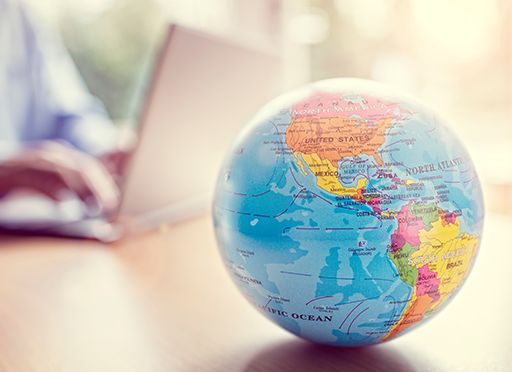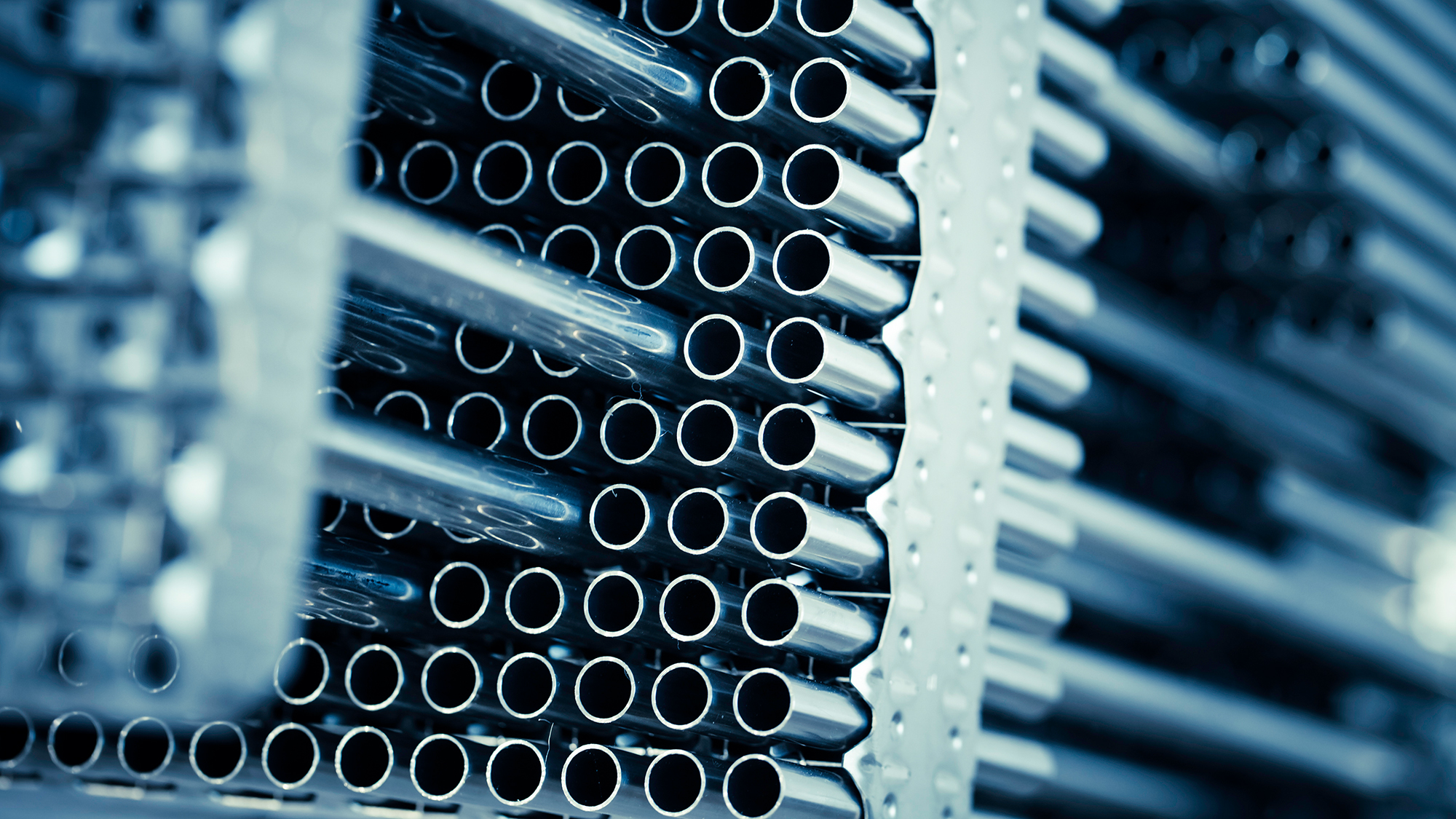“Even Moderately Elevated Temperatures Can Subtly Reduce Human Capital and Productivity”

Jisung, according to recent surveys, a 2°C temperature rise could cost the U.S. economy between $420 to $630 billion annually. That sounds worrying but abstract enough to not care as a leader of an organization. In Slow Burn, you break huge numbers down to individual companies and their rising climate change-induced costs – obvious or hidden. Why is this so important right now?
R. Jisung Park: Well, I’m an economist, and I can’t pretend to know the specific impact of climate change on every company or industry. However, I can share some general observations and principles that might be useful for decision-makers to think about adapting to rising temperatures and costs – or potentially mitigating them. You mentioned a two-degree Celsius rise. But we’ve already warmed by more than one degree, so we’re more than halfway there. And these costs, even though they seem abstract, are cumulative. This is not just a one-time economic shock; the costs for societies, economies and businesses will continue accumulating yearly in a warmer climate. Over the last few years, I have been amazed by the research that highlights how even non-catastrophic climate change affects economic fundamentals. I think all individuals and organizations are well advised to take note of these impacts.

What are the aspects to focus on – and why?
The research includes climate change impacts on worker productivity, workplace safety, health, skill formation, and human capital accumulation—all critical components in the modern economy. Some risks aren’t immediately obvious, like wildfires: Even if your company is far from wildfire zones, research from Stanford, Harvard, and others shows that wildfire smoke, which can travel thousands of kilometers, can affect worker productivity and consumer behavior through its impact on health. So, the immediacy of the warming and the broad effects of climate change, even at non-catastrophic levels, are key points to focus on.
More than 3 in 4 of the world’s top CEOs think their companies are unprepared to mitigate climate change’s financial risks. The language they often understand best is the language of costs, and rising temperatures through the middle of this century are likely to be far costlier than thought — to the tune of $38 trillion per year globally, a recent study finds. So, what key steps should businesses take to improve their preparedness?
A necessary first step is to become better informed. I think it’s crucial to stay curious and not assume we understand the full impact of climate change based on news coverage or cultural stereotypes. For a long time, many people thought climate change mainly affected nature—plants, animals, ecosystems—not human activities. However, the data overwhelmingly shows that it impacts human activities, potentially affecting businesses. Investing in data and information on climate risks specific to your line of business may be worthwhile.
Let’s try to sort out the risks a little. How can we reconcile the two pieces of information that climate change might add $140 billion in U.S. healthcare costs by 2030 due to heat-related illnesses and other health impacts, and projections suggesting that U.S. businesses could face a 30% increase in energy costs over the next decade due to rising temperatures?
There are three main categories of climate change risks to consider: Transition risk involves the shift away from fossil fuels, driven by policy, technology, and consumer or investor sentiment. Then there’s physical risk—damage to assets from climate hazards like wildfires, extreme heat, flooding, sea-level rise, and storms. And then, there are liability risks. These may be existing risks for companies that need to be reassessed in the light of climate change, for example, the potentially increased liability in climate change lawsuits against companies or individual products. Understanding how these risks could affect your business is a crucial step, and they might not always be obvious.
If, for instance, your operations are in a ‘cold,’ developed economy, but your suppliers are in places like Bangladesh or Brazil, climate shocks can ripple through the supply chain and impact you. So, understanding these complex pathways seems important.
You mention heat as a central factor for companies. For example, many might consider changing working hours due to extreme heat – like implementing a more extended break during early summer afternoons, quite common in Spain or Greece, or “Ferragosto” in Italy, where most companies close for the hottest two summer weeks and require all workers to take mandatory vacation – or invest in better air conditioning. What tasks should companies prioritize when it comes to rising temperatures?
Absolutely. We have time to prepare, and the sooner we can move into prevention mode rather than reaction mode, the better. With extreme heat, for instance, a critical first step is understanding your company’s exposure. Two components seem essential: your workforce and your infrastructure. First, consider the composition of your workforce.
The effects of heat on worker safety and health can vary significantly by occupation and industry. Office workers, for example, might be insulated from heat, while groundskeepers, waste management staff, or manufacturing workers might be highly exposed. So, understanding where your employees are most at risk seems important.
Second, consider your infrastructure. Heat can significantly affect productivity even in developed economies like the U.K. or Canada if the infrastructure isn’t adapted to higher temperatures. For example, London historically had only one or two days above 32°C (90°F) per year, but that number is expected to increase. Similarly, the number of dangerously hot days in Rome is expected to quintuple. If your infrastructure isn’t built to handle these conditions, it will likely impact your operations. Older buildings, which are common in Europe, may be particularly challenging to retrofit for heat adaptation.
Like in the U.S., many industrial areas in Europe were built near smaller rivers and historically seemed safe. Three years ago, Western Germany experienced severe flooding, wiping out entire villages in valleys that had never seen floods like that before. The U.S. faced $165 billion in damages from 22 extreme weather events in 2023 alone.
Still, the data suggests that climate hazards—extreme heat, wildfire smoke, or heavy precipitation—can also subtly and profoundly impact human capital and learning outcomes. These effects might not be as visible as infrastructure damage, like Hurricane Sandy destroying bridges, but they can have long-term impacts on productivity and education.
Can you share some examples or studies highlighting how climate change affects learning and productivity, especially in ways leaders might not expect?
Sure. I’ll give you two examples: One study we conducted looked at how heat affects human productivity, including cognitive or knowledge work, which is the backbone of most industrialized economies. We analyzed New York City public high school students taking their college entrance exams. We could see how temperature affected their results by tracking their performance across different exam days.
We found that students taking exams on hotter days—around 32°C (90°F)—were about 10% less likely to pass than those who took exams on milder days. This demonstrates how even moderate heat can negatively impact cognitive performance.
Another study, conducted with Josh Goodman at Boston University and colleagues at College Board, examined how cumulative heat exposure affects the learning rate over time. We found that students exposed to more hot days during the school year experienced smaller gains in learning. So, essentially, the growth rate of human capital was reduced in hotter years. These studies show that even moderately elevated temperatures can subtly reduce human capital and productivity, critical to long-term business success.
In L&D, we often hear about return on investment regarding learning initiatives and training content and debate which micro course paid off. I’m exaggerating, but could the impact of simply installing air conditioning in learning environments be more significant than many of the sophisticated learning strategies and digital tools we currently implement and measure?
Learning new things is challenging, even under the best conditions. If heat makes this more challenging, then one could imagine that installing AC could improve the return on learning investments, which would pay off even more in subsequent years as the climate warms. But it’s worth noting that AC may not be the only or even the best option – a lot will depend on each company’s specific context.
Considering the unequal situations faced by poorer communities and societies severely impacted by climate change, what else would you suggest to ensure equal access to future quality learning environments?
Even in the U.S., which is one of the most air-conditioned countries in the world, students in poorer school districts and those in predominantly Black and Hispanic communities are less likely to have access to functioning air conditioning, whether at school or home. This reflects a broader trend where climate change exacerbates existing inequalities, not just internationally between the Global North and South but also within countries.
We estimate that in the U.S., between 3% and 7% of the racial academic achievement gap could be attributed to hotter climates and unequal access to air conditioning. This is significant considering that the entire gap is roughly three years’ worth of learning.
And this gap could widen with climate change unless we make remedial investments. First, we should understand and admit this fact.
As a next step, Slow Burn suggests taking a more statistical approach, especially at the organizational level. Yet, climate change still tends to be seen as a CSR issue in many companies. What must change?
While I’m not a psychologist, one of the core messages of my book is about the psychology of how we approach climate change.
Historically, much of the climate change coverage has had a doomsday narrative, which can either lead to panic or cause people to dismiss it as extreme and ignore it. Neither response is helpful.
The book encourages us to think statistically and quantitatively about climate change rather than relying on narratives alone. The good news is that there’s already a lot of data and quantitative economic analysis on the potential damages from climate change. For example, if you want to understand the transition risk associated with climate change, the social cost of carbon is a valuable metric.
What does it tell us?
It represents the dollar value of all future damages from an additional ton of CO2 today. So, suppose the social cost of carbon is $200 per ton. In that case, that has significant implications for the profitability of investments in solar, wind, and even carbon capture technology, compared to a lower cost of carbon. Similarly, companies should quantify the physical risks to their operations and value streams using available data and tools. This helps them understand their specific exposure to climate risks, enabling more informed decision-making.
Would it make sense for companies to initiate discussions within their organizations about these risks? Could bringing together people from across the supply chain to discuss the impact of climate change—like extreme heat—help them better prepare for the future?
That sounds like a great idea, especially if you suspect that information about climate risks is siloed within your organization. For example, in an airline, workers on the tarmac, in the cockpit, and in baggage handling might all experience the effects of heat and wildfire smoke differently. Bringing representatives from these areas together could help the company better understand how these risks interact. Your idea of involving the supply chain is also important.
Climate risks might not be obvious until a disaster strikes, but proactively discussing potential bottlenecks or vulnerabilities can help companies avoid these issues.
So, as we end this interview, what gives you hope in the whole climate discussion? Are you optimistic that more companies will develop a sense of agency and accurately predict future costs, including hidden ones?
The risks we’re dealing with are significant, and the potential for catastrophic climate change is real. But I also believe in maintaining a sense of positive agency because that’s the only way to create lasting change. My optimism is grounded in a few things. First, we’ve already made progress. Projected future warming, though still distressingly high, is now significantly lower than what we projected 10 to 15 years ago, thanks in part to actions taken and pledges made to reduce emissions. Second, technological advances, especially in solar and wind energy, have exceeded expectations, which is excellent news. Finally, we have more tools to engage in climate adaptation planning, making our economic systems more resilient to the inevitable warming. While we can reduce future warming, we still need to prepare for the changes already baked in. Using science, data, and good management, we can rise to the challenge and make our systems more resilient.
About the Author:
R. Jisung Park is a labor and environmental economist and an assistant professor at the University of Pennsylvania. He has also worked as a Harvard postdoctoral fellow and a UCLA faculty member.






